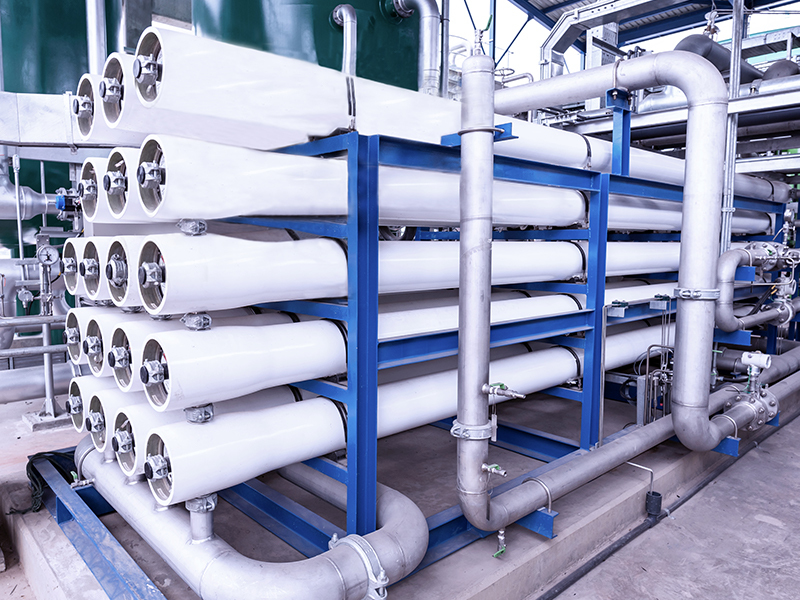Emerging contaminants, such as PFAS, are driving new treatment systems where they were previously not necessary. While it is tempting to address the need with a single treatment process, the composition of water is more than its concentration of regulated contaminants. The treatment approach should look beyond any single contaminant and consider the entire water quality to design an appropriate solution.
There are a plethora of treatment technologies and techniques available -- many of which will address multiple constituents but with varying suitability. Ultimately, the most efficient application may involve pre-treatment or multiple unit processes in series. When done right, this approach will simplify operations in lieu of adding complexity while resulting in the lowest cost of ownership.
Water Treatment Approaches
Many of the things that need to be removed from water are very small and exist as fine solids (e.g., turbidity) or dissolved constituents (e.g., total organic carbon, iron, and manganese). There are generally three approaches to removing them:
- Conventional Treatment: Promote the formation of larger, insoluble particles that are easier to remove through sedimentation and/or media filtration.
- Membrane Filtration: Use membrane filters with pore sizes small enough to match the particle size of what is being removed.
- Adsorption: Attract and hold particles onto a fixed media bed via adsorption or ion exchange.
Conventional Treatment
The first approach often relies on chemicals, and it may include additional equipment to facilitate mixing and reaction time. This might involve feeding a coagulant and filter aid to flocculate suspended solids or using an oxidant to convert iron and manganese to insoluble forms. Sometimes, filterable solid particles are fed into the water to attract dissolved constituents, like powdered activated carbon (PAC) for taste and odor or hydrous manganese oxide (HMO) for radium. These larger, insoluble particles are removed through sedimentation and/or media filtration, which are longstanding methods and robust in operation. Media filters can be expected to last thirty years or longer with infrequent maintenance; media is generally replaced after fifteen years.
Membrane Filtration
The second approach relies on advanced filtration technologies, usually involving membranes. Whereas media filters generally remove particles down to 1-10 micron (µm) in size, ultrafiltration membranes have nominal pore sizes of 0.1-0.01 µm and can directly retain turbidity and certain pathogens. Reverse osmosis (RO) membranes have an even smaller pore size that can remove dissolved ions like nitrate (NO3-) or calcium (Ca2+). Compared to media filters, membrane systems require more maintenance and attention. The membrane elements often need replacement after three to seven years depending on type and application. When designing a treatment system, anything that can be done to extend the life of the membranes should be considered to benefit the overall cost of ownership.
Adsorption
The third approach uses media in a fixed bed to selectively attract and retain charged particles as water passes through. These applications are mostly removing ions or dissolved organic molecules, and different types of adsorptive media are available, including ion exchange resins, granular activated carbon (GAC), and other specialty designer media. The United States Environmental Protection Agency (USEPA) named ion exchange and GAC as best available technologies (BAT) in their proposed rule to regulate per- and polyfluoroalkyl substances (PFAS). PFAS are prevalent in the environment through their wide use in consumer products and firefighting foams, and their pending regulation is drawing more attention to adsorption as a water treatment solution.
Pre-Treatment and Integrated Systems Approaches
Pre-treatment is a relative term that might imply a two-stage process, but the basic concept is part of a broader, integrated-solutions perspective that recognizes the strengths and weaknesses of different process technologies for various applications. This becomes more significant when considering the lifecycle of the equipment and the associated operating expenses.
In general, membrane and adsorption processes are more complex and costly than conventional treatment. If something can be removed through conventional treatment, that is often the route taken. However, many contaminants of concern require the use of membranes or adsorption systems. In these cases, the different treatment approaches are often used in concert to increase overall process efficiency by removing nuisance constituents to the benefit of a certain unit process.
For instance, brackish groundwater sources are getting greater consideration for use in regions that struggle with water scarcity. These waters have high concentrations of total dissolved solids (TDS), requiring treatment with RO membranes, but may also have iron and manganese. For an RO system, the presence of iron and manganese would require additional antiscalant chemicals and more frequent cleanings while also limiting the life of the membranes and cartridge pre-filters. On the other hand, iron and manganese are easily removed through media filtration, which is a robust and low-maintenance technology. Adding a media filter as pre-treatment to the RO membrane system will lower its operating costs and minimize risk, which could justify the additional capital investment when considering overall lifecycle costs.
The same goes for adsorption systems. Iron and manganese pose a fouling risk that can reduce media capacity affecting its lifecycle. Pre-treatment becomes more critical for single-use, non-regenerable adsorptive media that must be replaced upon exhaustion. Because these types of media are very expensive, it is preferable to remove through pre-treatment anything that could limit their capacity to accumulate the targeted contaminant of concern.
When one contaminant of concern is driving the need for a water treatment system, you should not lose sight of the other constituents in the water and their impacts on system performance and operating costs. It is important to consider the treatment options available and integrated system approaches to address the entire water quality when seeking the lowest total cost of ownership.
Kurita America is accustomed to providing integrated solutions as a single-source provider through our broad portfolio of treatment equipment. Contact us to discuss different treatment strategies for your water sources in accordance with your long-term goals.

